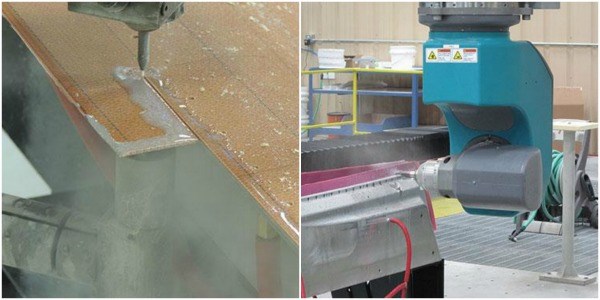When to Waterjet, When to Mill
A composite parts manufacturer in Nebraska recently installed a combined five-axis waterjet/milling machine to position itself to win large-scale aerospace work it sees on the horizon.
Share






This Composites Machining Cell enables Royal Composites to perform both five-axis waterjet and milling operations for large aerospace components.
Abrasive waterjet machines offer distinct advantages for trimming composite materials. For example, waterjet machining has inherently low cutting forces, so fixtures need not be as bulky as those required for conventional milling operations. Plus, garnet abrasive media serve as a waterjet stream’s “cutting edges,” and fresh media are continually introduced into the stream. Therefore, the stream’s cutting edges are always sharp, whereas conventional routing and drill bits can wear, possibly resulting in delamination or burred edge finishes. However, in some cases, milling is the only viable machining process due to fixturing interference or other issues.
In this story, learn how will use a machine that features both five-axis waterjet and milling capabilities to perform both of those operations as it goes after large-scale aerospace work.
Related Content
-
Grob Systems Inc. to Host Tech Event With Industry Partners
The 5-Axis Live technology event will highlight new machining strategies for optimizing the production of complex medical, aerospace and mold/die parts.
-
Horizontal High-Speed Machining Saves Hundreds of Work Hours
High-speed machining is the latest change at Blair-HSM South, helping this once old-fashioned shop improve productivity and morale while enabling new work.
-
5 Tips for Running a Profitable Aerospace Shop
Aerospace machining is a demanding and competitive sector of manufacturing, but this shop demonstrates five ways to find aerospace success.














